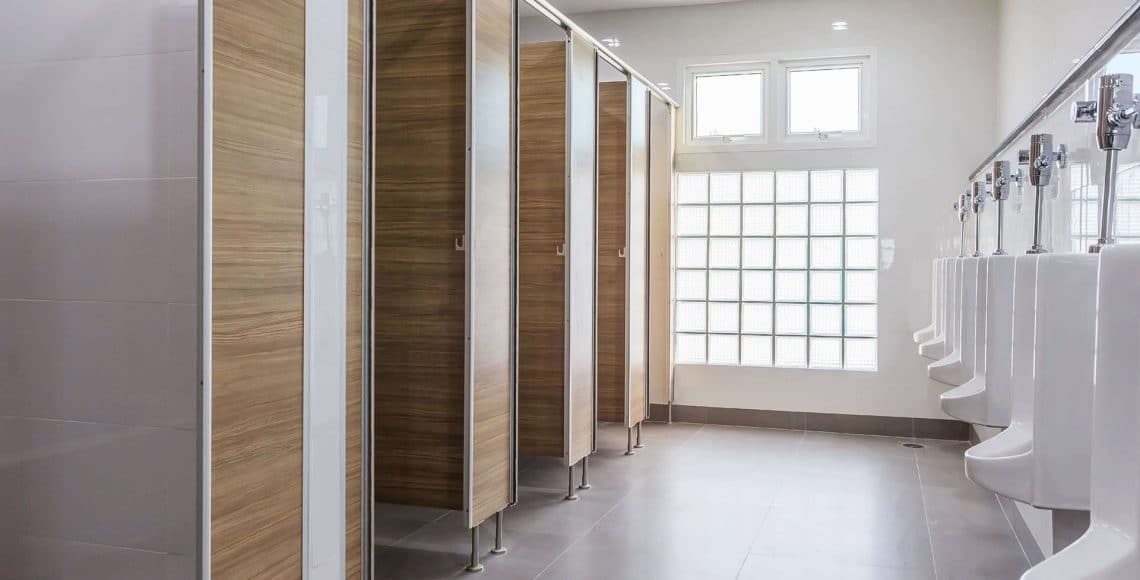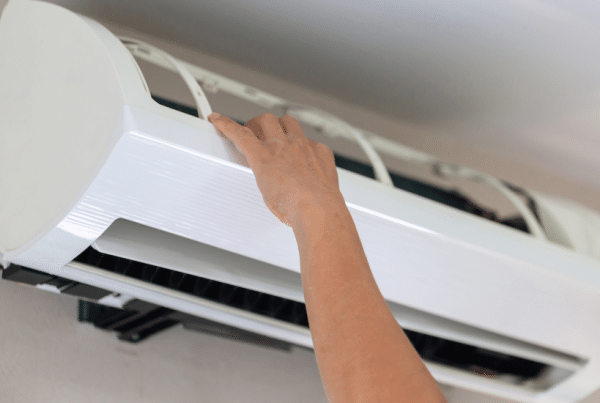If you own or manage a business, you understand that keeping your bathrooms or washrooms clean is something you do on a daily basis. How well you keep your bathrooms clean and the way it is designed speaks highly of you and your values as a business owner. Run-down toilet partitions can have a negative impact on employee morale and also turn customers away from your business.
Not all business owners, however, know how to clean their toilets or washrooms properly. This article will explain how you can clean your toilets and partitions to keep a sanitary environment for your business.
If you’ve recently installed partitions in your toilet or washroom area, you’ll want to make the most of your investment by keeping them looking in their best shape for years to come. How clean your bathroom looks also sends a strong message to your customers. You may not think of it that much but the appearance and design of your partitions is one of the factors that encourage customers to return again in the future. A little effort and planning can go a long way in keeping your bathroom clean and vibrant.
Cleaning Solid Plastic Partitions
Solid plastic is the most commonly used material for toilet partitions. They are easy to clean because they are water and rust resistant. By applying pressure to a warmed spoon, you can eradicate scratches from your solid plastic partition. Rub and stroke the spoon over any scratches to remove them. This technique works great for strong plastic materials, since you’re mixing the plastic. To prevent any future scratches, avoid using steel fleece for cleaning. For harder stains that cannot be removed by delicate cleansers, use a non-grating industrial cleanser instead.
You can also create your own DIY cleaner by combining the things below:
- ½ cup of regular detergent
- 1 gallon of water
- 66% trisodium phosphate in a cup
If you’re considering using grating cleaners, just remember that if you do, your plastic partition will end up getting damaged in the long run.
Cleaning Plastic Laminate Partitions
Plastic laminate partitions are made from molecule board enclosed in a plastic laminate surface. The cleaning process for this type of toilet partition is quite simple. To get rid of low-level stains and perform regular cleaning, you need some light cleaning agents and a soft brush or a soft piece of cloth. Dry and rinse the area afterwards. In case you’re facing really stubborn stains head on, you’ll need a strong detergent for that. Also, it is a good idea to use a cleaner that has acetic acid in its ingredients. Clean the area with a fabric or soft brush before washing and drying. As much as possible avoid abrasive detergents, because they can damage or stain your partitions. It isn’t a good idea to hose down these partitions as well as retaining huge amounts of water can result to them losing their cover.
Cleaning Solid Phenolic Partitions
Phenolic partitions are quite different from the two types of partitions we’ve mentioned above. This type of partition is made from using several layers of paper that have been absorbed phenolic resin. As a result, it’s water resistant and can be hosed down to clean. Your usual cleaning routine for this type of material should involve a soft fabric and warm water mixed with a gentle cleanser or soap. In case the partition has a textured finish, you can use a soft brush for cleaning.
In case of hard stains, do the following:
- For stains such as lipstick or crayon, a regular cleanser is enough. In case it doesn’t work, use a degreasing agent or use a solution made of water and baking soda. Use a delicate bristled brush instead of a cloth.
- For much harder stains, it’s okay to use a more dominant cleanser instead of your delicate cleanser. Avoid using abrasive detergents no matter what. Opt for a cleanser that contains acetic acid.
- For spray paint, you’ll need a graffiti cleaner for this. An ordinary cleanser will probably not be effective in removing the graffiti.
After using the items mentioned above, make sure you wash and dry once you’re done. Another great technique you can use is to do regular cleaning with furniture polish. This helps keep the partitions well-maintained.
Cleaning Stainless Steel Partitions
Stainless steel toilet partitions are the most common type of partitions used. This is due to the durability of stainless steel. Stainless steel partitions are also non-corrosive thanks to the thin layer of film on the metal’s exterior. Whether or not this film gets scratched, it will change normally so long as there’s a steady flow of oxygen.
To clean this partition, it’s advisable to wipe it down with warm water and a gentle cleanser at least once a day. A great choice of cleanser would be diluted ammonia soap. Make sure the towel you use to wipe is just damp. Rinse the partition with water to remove any traces of soap. For harder stains and scratches that normal cleansers can’t remove, you can do these instead:
- For dirt buildup, use a metal cleanser made for cleaning steel surfaces
- For oil or grease stain, wipe with a mixture of water, cleanser and kerosene solvent
- For mineral deposits, you’ll need a stronger, more abrasive cleanser like Ajax
When cleaning stainless steel partitions, make sure you consistently rub in the same direction to avoid scratching or scarring the surface. If you’re cleaning stainless steel products, avoid using cleansers that contain bleach, acid, or alkali. These products will destroy the stainless surface. Avoid using steel wool and scrubbing pads as well.
General Rules to Remember:
We’ve discussed which cleansers are appropriate for different types of toilet partitions, but there are also some rules can be used for each type of material:
- For regular cleaning, there’s no need to buy expensive or abrasive cleansers. Stick to using warm water, soap, and gentle detergents. Dry or rub using a soft cloth.
- Don’t use cleansers containing acid or bleach, like the ones used for cleaning toilet bowls.
- Avoid using steel wool or scrubbing brushes as these can damage the surface and scratch the partitions.
- Rinse using clean water to remove any soap or detergent residues.








